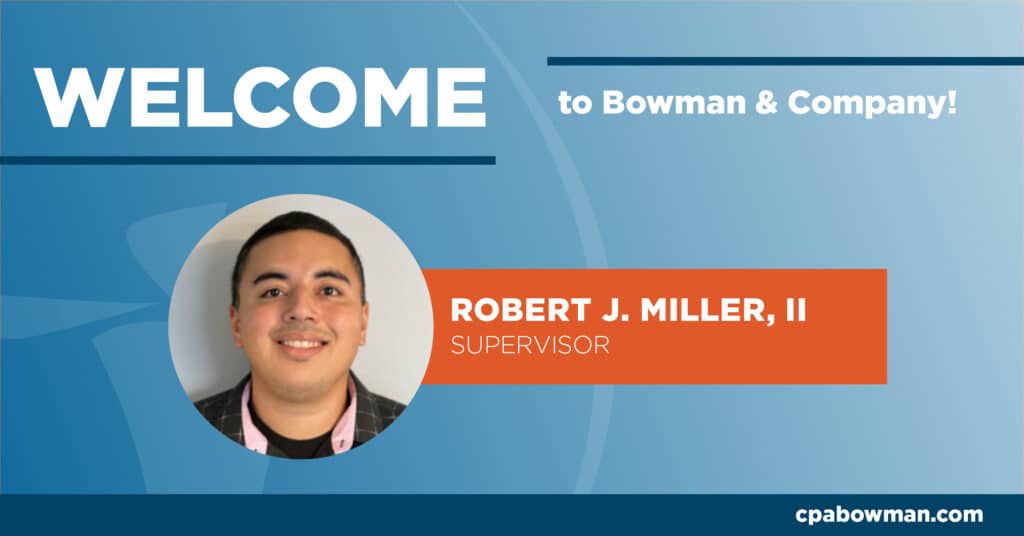As the country emerges from the COVID pandemic and supply chain issues, along with the fallout from the war in Ukraine, the country has been experiencing high inflation rates that negatively impact the cost of everyday living, including food, gas for your vehicle, utilities and more.
But there is one shining light: tax-related inflation adjustments that will benefit most taxpayers. However, many media outlets have been touting the IRS’ recently released inflation adjustments for 2023 as if taxpayers will see the benefits this coming spring when they file their tax returns. What much of the hype fails to mention is that the 2023 increases will show up on your 2023 tax return which will be filed in 2024. So most people will have to wait until 2024 to see the approximately 7% inflation adjustment to tax benefits.
But there was an approximately 3% inflation adjustment for 2022 from which you will benefit when you file your 2022 tax return in early 2023.
If you are an employee, you may notice some reduction in the amount of income tax withheld from your wages starting in January, as the 2023 tax withholding calculation will take into account some of the items affected by the inflation adjustments, such as the increased standard deduction and widened tax rates.
Standard Deduction: The table illustrates the increases in the standard deduction for 2022 and 2023. As shown in the table, for taxpayers filing married joint returns the increase was $800 from 2021 to 2022 and $1,800 between 2022 and 2023. For a married couple filing jointly these amounts are not subject to income tax. Taking this a step further, if that married couple were in the 22% tax bracket their tax savings would be $176 (0.22 x $800) in 2022 and $396 (0.22 x $1,800) in 2023.
| Basic Standard Deduction | |||
| Filing Status | 2021 | 2022 | 2023 |
| Married Joint | 25,100 | 25,900 | 27,700 |
| Head of Household | 18,800 | 19,400 | 20,800 |
| Single | 12,550 | 12,950 | 13,850 |
| Married Separate | 12,550 | 12,950 | 13,850 |
Tax Brackets: Tax brackets are also affected by the inflation adjustments as illustrated in the tables below. For example, you will note that for an unmarried taxpayer using the single filing status for 2022 the table shows that when the individual’s taxable income reaches $89,076 the marginal tax rate increases from 22% to 24%. However, that transition between 22% and 24% occurs at $95,376 for 2023, or a difference of $6,300 that is taxed at 2% less than in 2022. Inflation adjustments are made annually for all the marginal rate brackets.
| Individual Taxpayers (Single) Tax Rates | ||
| Marginal Rate | 2022 Taxable Income | 2023 Taxable Income |
| 10.0% | $0 -10,275 | $0 – $11,000 |
| 12.0% | $10,276 – $41,775 | $11,001 – $44,725 |
| 22.0% | $41,776 – $89,075 | $41,776 – $89,075 |
| 24.0% | $89,076 – $170,050 | $95,376 – $182,100 |
| 32.0% | $170,051 – $215,950 | $182,101 – $231,250 |
| 35.0% | $215,951 – $539,900 | $231,251 – $578,125 |
| 37.0% | $539,901 and above | $578,126 and above |
| Heads of Household Tax Rates | ||
| Marginal Rate | 2022 Taxable Income | 2023 Taxable Income |
| 10.0% | $0-$14,650 | $0 – $15,700 |
| 12.0% | $14,651 – $55,900 | $15,701 -$59,850 |
| 22.0% | $55,901 – $89,050 | $59,851 -$95,350 |
| 24.0% | $89,051- $170,050 | $95,351 -$182,100 |
| 32.0% | $170,051 – $215,950 | $182,101 -$231,250 |
| 35.0% | $215,951 – $539,900 | $231,251 -$578,100 |
| 37.0% | $539,901 and above | $578,101 and above |
| Married Individuals Filing Joint Returns and Surviving Spouses (Joint) Tax Rates | ||
| Marginal Rate | 2022 Taxable Income | 2023 Taxable Income |
| 10.0% | $0 – $20,550 | $0 – $20,550 |
| 12.0% | $20,551- $83,550 | $22,001- $89,450 |
| 22.0% | $83,551 – $178,150 | $89,451- $190,750 |
| 24.0% | $178,151 – $340,100 | $190,751- $364,200 |
| 32.0% | $340,101 – $431,900 | $364,201- $462,500 |
| 35.0% | $431,901 – $647,850 | $462,501- $693,750 |
| 37.0% | $647,851 and above | $693,751 and above |
| Married Filing Separately Tax Rates | ||
| Marginal Rate | 2022 Taxable Income | 2023 Taxable Income |
| 10.0% | $0 – $10,275 | $0 – $11,000 |
| 12.0% | $10,276 – $41,775 | $11,001 – $44,725 |
| 22.0% | $41,776 – $89,075 | $44,726 – $95,375 |
| 24.0% | $89,076 – $170,050 | $95,376 – $182,100 |
| 32.0% | $170,051 – $215,950 | $182,101 – $231,250 |
| 35.0% | $215,951 – $323,925 | $231,251 – $346,875 |
| 37.0% | $323,926 and above | $346,876 and above |
Besides the standard deduction and tax brackets there are a large number of other tax attributes that are subject to inflation adjustment as well. Here are some examples.
| Tax Attributes | 2022 | 2023 |
| Maximum Earned Income Tax Credit (with 3 or more children) | $6,936 | $7,430 |
| Adoption Credit | $14,890 | $15,950 |
| Maximum Foreign Earned Income Exclusion | $112,000 | $120,000 |
| Annual Gift Tax Exclusion | $16,000 | $17,000 |
As of this writing, the IRS has not yet released the 2023 maximum contributions to IRAs, 401(k)s and other retirement plans. It is anticipated that these amounts will also increase substantially due to the adjustment for inflation.
Please contact this office if you have any questions.


